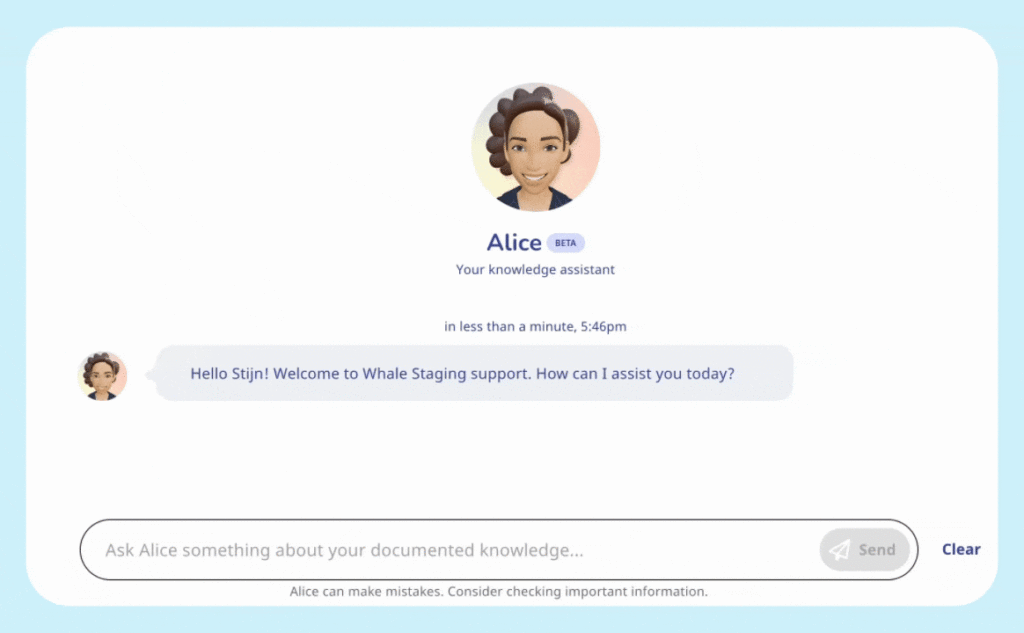Business systemization is the process of creating, and implementing systems and processes to streamline operations, improve efficiency, and drive sustainable growth.
Sounds lovely. Interesting even but this sounds like something for a multi-million dollar company right?
Nope. Whether you’re a startup, a growing restaurant chain or a real estate or law firm, systemization can be a game-changer.
Ultimately, systemizing your business should eliminate inefficiencies and make your employees’ lives easier.
So, without further ado, here’s EVERYTHING you need to know about business systemization.
What is business systemization?
We didn’t come up with this concept. Neither did Ray Croc when he started KFC.
We can’t say who exactly invented the term but people really started talking about business systemization after Michael E. Gerber’s 1986 book, The E-Myth (re-released in 1995 as The E-Myth Revisited).
The book dispels the myth of entrepreneurship and teaches how to build a successful business utilizing systems and processes.
Many business owners inadvertently allow “systems” to develop that completely depend on themselves or their employees without even realizing it. The key to scalability and growth is to design business systems that intentionally;
- Allow founders to delegate
- Train new team members faster
- Create competitive edge
- Create time for business owners to work on their business, not in it
It’s easy to make mistakes as you grow, but the more you systemize your business, the fewer mistakes you’ll be prone to making. And the quicker you’ll be able to use the mistakes you do make as opportunities for growth.
What business systemization looks like?
Systemization in business can look like;
- Documenting your SOPs and processes
- Automating your accounts process
- Implementing technology to help you automate or speed up processes
- Introducing an AI Assistant to help you find the information you need faster
What are the benefits of implementing systems in business?
Imagine your star employee, you know Mary – the one who’s been managing your finances and accounting for years – suddenly has to take leave because of a family emergency.
And you’re left wondering how on earth you’re going to run payroll this month, nevermind send the accountant all the necessary invoices for your quarterly tax submission.
As you start implementing systems in your business, that’s just ONE of the problems that will disappear.
You’ll be able to experience
- Efficiency:
Implementing standardized processes reduces inefficiencies, minimizes errors, and maximizes productivity. It enables your team to work smarter, not harder, by streamlining workflows and eliminating unnecessary steps.
- Consistency:
Consistency breeds trust and reliability. With well-defined systems in place, you ensure that tasks are performed consistently to high standards, regardless of who is executing them. This consistency enhances customer satisfaction and builds a strong reputation for your brand. Your systems always allow you to deliver your on brand promise!
- Scalability:
As your business expands, scalability becomes essential. Systemization allows for seamless scaling by providing a solid framework that can accommodate growth without sacrificing quality or integrity. It ensures that your operations remain efficient and effective even as your business evolves.
- Adaptability:
To cope with the rate of change in today’s market, your business needs to be agile and adaptable. Systemization fosters agility by enabling quick adjustments to processes in response to changing market conditions, customer preferences, or internal needs. It empowers your organization to stay ahead of the curve and capitalize on opportunities as they arise.
What does this mean? It REAL terms?
It means less burnout for your team members. Greater time-saving.
And when Mary has to take a sudden leave of absence, you won’t be left trying to figure out how to make things work!
Questions to ask before systemizing your business?
Wow, this systemization thing seems to be the answer you’ve been looking for!
But wait!
Before you delve and dive into fancy ways of systemizing your business, you need to ask these important questions:
Will it;
- Free up time?
- Have any bearing on your company’s growth metrics?
- Vastly improve your customer service and success?
- Align your team members?
- Solve a problem in your business? One that is preventing you from scaling?
- Ease pressure in your team?
If the answer is no, there’s no point in creating systems for the point of creating systems. Rather, focus on systemizing parts of your business that will make a difference.
What are the fundamentals of business systemization?
Here are the 3 elements that affect and will be affected by systemization;
- People
- Process
- Technology
It’s important to understand how people, process, and technology (The PPT Framework) work together before you go ahead with creating new systems.
The most impactful systems are the ones that take into account all of the above and weave the advantages of all three into the new way of working.
Common challenges in business systemization
As we alluded to above, there are a few challenges with systemization that you need to consider before jumping into a new way of running your business.
FIRST, and we repeat, do NOT create systems for things that are not going to have an impact. If it’s not going to add value, save time, or help you scale, then don’t do it!
We often talk to entrepreneurs and heads of business who are completely overwhelmed. The reasons are often because they;
- Are trying to do too much at once
- Have created systems but haven’t communicated the new systems to their teams
- Haven’t trained their team members
- Are trying to manage the whole process by themselves
- Struggle to get everyone onboard
Thankfully, if you take into account the PPT Framework, start small, and involve your team, you’re likely to reap the benefits.
How to develop a business systemization strategy?
Don’t panic; we’re not going to suggest a whole business change. A business systemization strategy only involves 3 steps, which you might already have prepared as part of your overall business strategy.
- Define business goals and objectives
You’ve got to know where you’re going if you want to know how you’re going to get there.
- Prioritize areas for systemization
You can’t do everything and nor do you need to. Prioritize areas of the business that are most going to impact your business goals and objectives.
- Establish key performance indicators (KPIs) and metrics
Finally, you’ve got to know how you’re going to measure progress. What exact metrics are you going to use?
Now that you’ve established this, you’re ready to implement changes.
5 Steps to organize and systemize your business?
Great, you’ve got your business focus; now you know which areas need to be systemized.
Now what?
How on earth do you organize your business?
There are a few easy steps you can take to streamline and systemize your business.
- Involve your team and communicate your intention to systemize parts of the business
- Assess your current processes in your prioritized areas
- Evaluate and implement a company wiki / Knowledge base and other tools to help you scale your business
- Document your Processes and SOPs
- Train Employees on New Systems
Remember the example of the administration and finance head, Mary?
Even if Mary has never documented her processes, she has a system for working.
Let’s say you’ve decided that finance and sales are the parts of your business that will benefit from systemization the most and make the biggest impact.
According to the above 5 steps, you would;
Ask Mary how she does things. You may ask her to document certain processes. You’d ask her if there were ways to improve what she does. You may talk to a process consultant to help you figure out how best to systemize this part of your business.
If you didn’t have a company wiki or knowledge base in place, then that would be the first place to start. Obviously, we suggest Whale, but feel free to have a look at the alternatives too.
Maybe there are other ways you’d like to systemize?
For example, in sales, you might decide to use an automated meeting calendar to book customer meetings. Or perhaps you’d set up an automated payroll in finances so that even if your team members were off, things would still run smoothly.
After documenting all the new processes, you’d have to make sure all your team members were trained on the new systems and had access to all relevant information.
It’s that simple.
The Best business systemization tools

With the rapid development and implementation of AI Tools over the past couple of years, there are an ever-increasing number of ways to automate and systemize the way of working.
These fall into a number of categories, including;
- Project Management Software
- Workflow Automation Tools
- Communication Platforms
- SOP and Documentation Systems
We’ve listed our favorite tools for scaling here, but we’d also like to share a few more systemization tools we love!
Here are some ideas on how to implement systemization and to make you a pro at automating your business.
- Customer Relationship Management (CRM) System Integration: Implementing a CRM system like HubSpot helps to centralize customer data, automate follow-up processes, and streamline communication with customers.
- SOP and Process Documentation Systems: Implementing document management systems like Whale to document and centralize your procedures and processes, train your team and manage one central source of truth for all your company knowledge.
- Project Management: Utilizing project management platforms such as Airtable will get your team to master projects on time, every time, helping to organize tasks, assign responsibilities, and track project progress.
- Email Automation: Implementing email automation tools like Hubspot to send automated responses, newsletters, and follow-up emails based on customer actions. PS We use Hubspot at Whale because it helps to have everything interwoven into one place!
- Inventory Management: Employing inventory management software such as QuickBooks automates inventory tracking and reordering processes and helps manage stock levels efficiently.
- Expense Tracking Systems: Use platforms like Expensify or Xero to automate expense tracking, receipt scanning, and reimbursement processes, streamlining financial management tasks.
- Social Media Management: Utilize social media management platforms like Hootsuite to schedule posts, monitor social media activity, and analyze engagement metrics across multiple platforms. Once again, we use Hubspot at Whale because it keeps everything in just one place.
- Workflow Automation: Integrate various apps and automate repetitive tasks using Zapier, such as automatically creating tasks in project management tools from new email notifications or updating CRM records based on form submissions.
- Internal Communication Channels: Utilize communication platforms like Slack to create dedicated channels for different teams or projects, facilitating real-time communication, file sharing, and collaboration. You can get super fancy here, even ensuring that your customer queries get directed to Slack so you never skip a beat!
You may also want to check out the wealth of AI Tools that can help you to save time in your processes.
Examples of how businesses have improved with systemization?
There are essential aspects of every business that should be considered when wanting to automate and systemize.
Small things like using a business organization chart to help new hires onboard quickly to improving your customer onboarding to increase customer satisfaction all make a difference.
The best example of how a business has improved efficiency through systemization is Macdonald’s.
As of December 31, 2022, MacDonald’s net profit was 26.65%. The company is one of the most successful restaurants globally, worth approximately $193.05 billion.
The fast-food giant revolutionized the restaurant industry by implementing highly standardized processes and systems across its global chain. Here’s how systemization has played a crucial role in McDonald’s success:
Standardized Processes: McDonald’s has meticulously documented and standardized its operational procedures, ranging from food preparation to customer service. This includes detailed manuals, training programs, and operational guidelines for every aspect of running a McDonald’s restaurant.
Efficiency: By systemizing its operations, McDonald’s achieves remarkable efficiency in food production, service, and customer experience. Employees follow streamlined workflows, which reduce errors, minimize waste, and optimize productivity.
Consistency: Customers expect consistent quality and experience at any McDonald’s location worldwide. Systemization ensures that every McDonald’s restaurant follows the same standards, resulting in uniformity in food taste, service speed, and overall brand experience.
Scalability: McDonald’s rapid global expansion wouldn’t have been possible without robust systemization. The company can replicate its successful business model in diverse markets with minimal variation, enabling efficient scaling and growth.
Training and Development: McDonald’s invests heavily in training its employees to adhere to standardized procedures. This not only ensures consistent quality but also fosters a culture of continuous improvement and accountability.
Franchise Model: McDonald’s franchise system relies heavily on systemization. Franchisees receive comprehensive support and guidance on how to operate their restaurants, including access to proven processes, marketing strategies, and supply chain management systems.
Business systemization templates
Monitoring and Measuring the Effectiveness of Systems
One of the steps in organizing and systemizing your business is to document your processes and SOPs. But how if you’ve never done anything like this before?
We’ve made it easy on Whale.
You can simply choose from a variety of templates on Whale such as the;
- The Ultimate Action Plan Template
- The Complete Employee Onboarding Checklist Template
- The Perfect Meeting Minutes Template
And more!
Or simply use AI to get started in seconds!
Once you’ve implemented systems in your business, it’s crucial to monitor and measure their effectiveness. This involves tracking various metrics such as efficiency gains, cost savings, error reduction, and employee productivity. Regularly assessing these metrics allows you to identify areas where your systems are performing well and areas that may require further optimization.
Additionally, soliciting feedback from employees who use the systems on a daily basis can provide valuable insights into their effectiveness and any potential areas for improvement.
By continuously monitoring and measuring the effectiveness of your systems, you can ensure that they remain aligned with your business goals and objectives.
Continuous improvement in business systemization
Business systemization is not a one-time process but rather an ongoing journey of continuous improvement. As your business evolves and grows, so too should your systems.
This requires a mindset of constant iteration and refinement. Encourage a culture of innovation and feedback within your organization, where employees are empowered to suggest improvements to existing processes and systems.
You can use systemization as a tool to improve continuously and fuel growth by analyzing;
- What systems are working?
- What impact are they making on the numbers and metrics in the business?
- What can be improved?
Bottom line?
You once started your business with a purpose and a vision. You wanted to make a difference.
Now, it’s time to take it to the next level. The more efficiently you and your team can operate the greater impact your business will have.
No matter the size of your company, the product you sell, or the service you provide, having systems that run smoothly requires ongoing work to maintain and refine them.
Entrepreneurs are focused on growth and scaling, but in order to ensure their happiness and that of their teams, it’s important to find the most optimal way of working.










